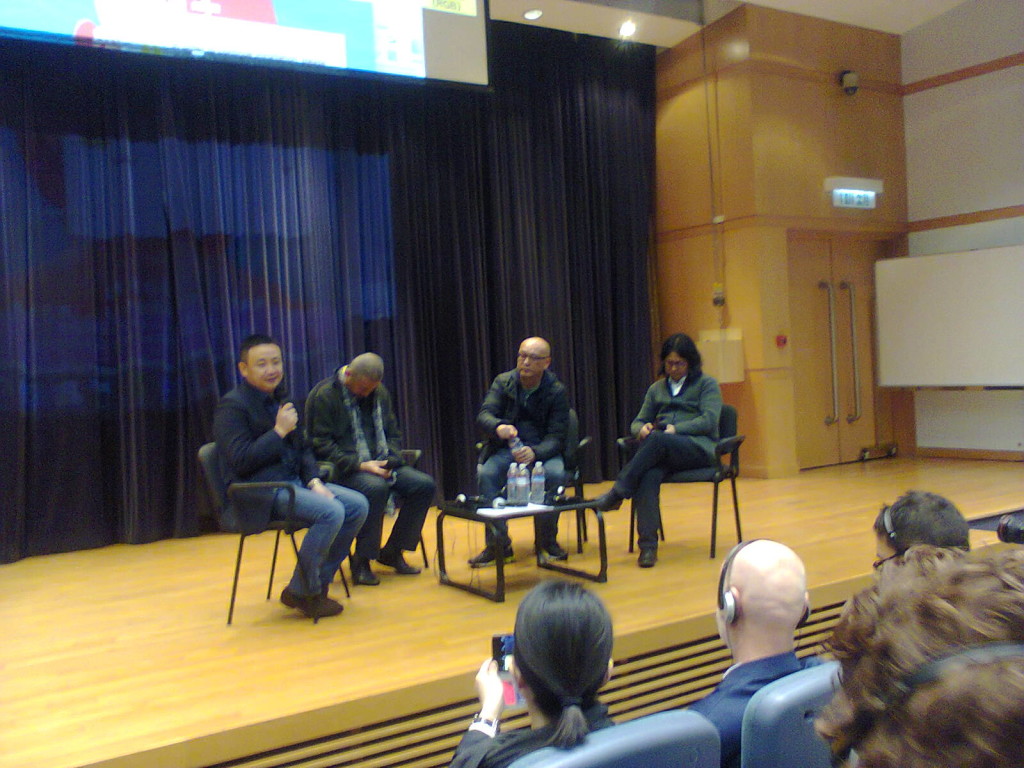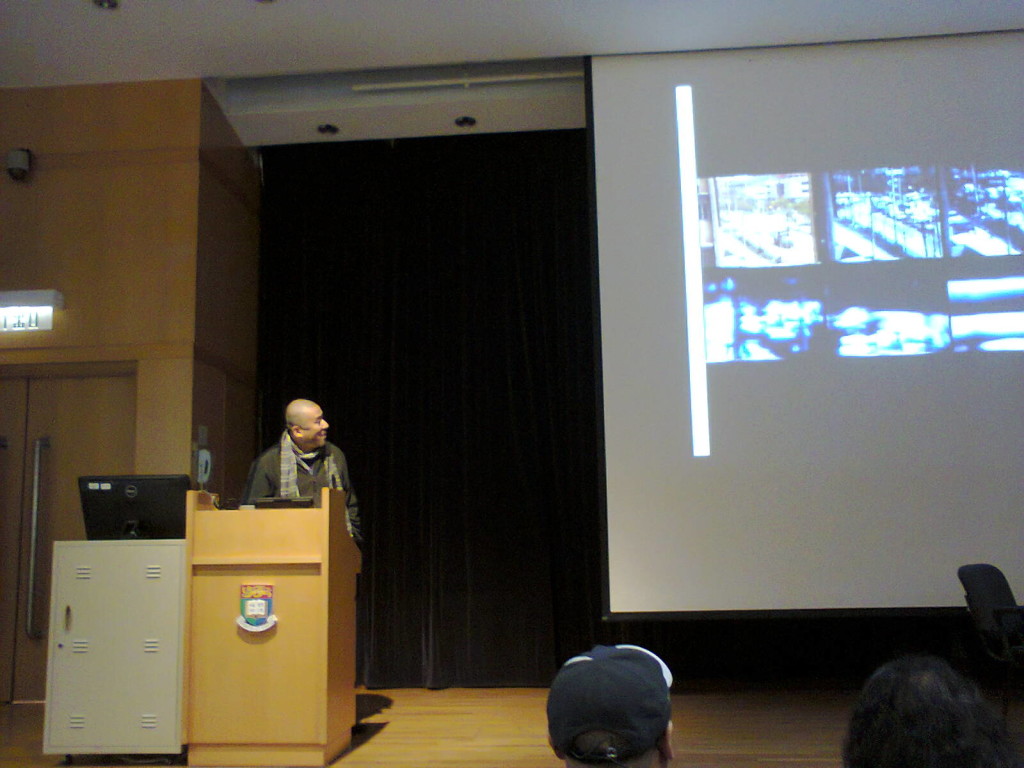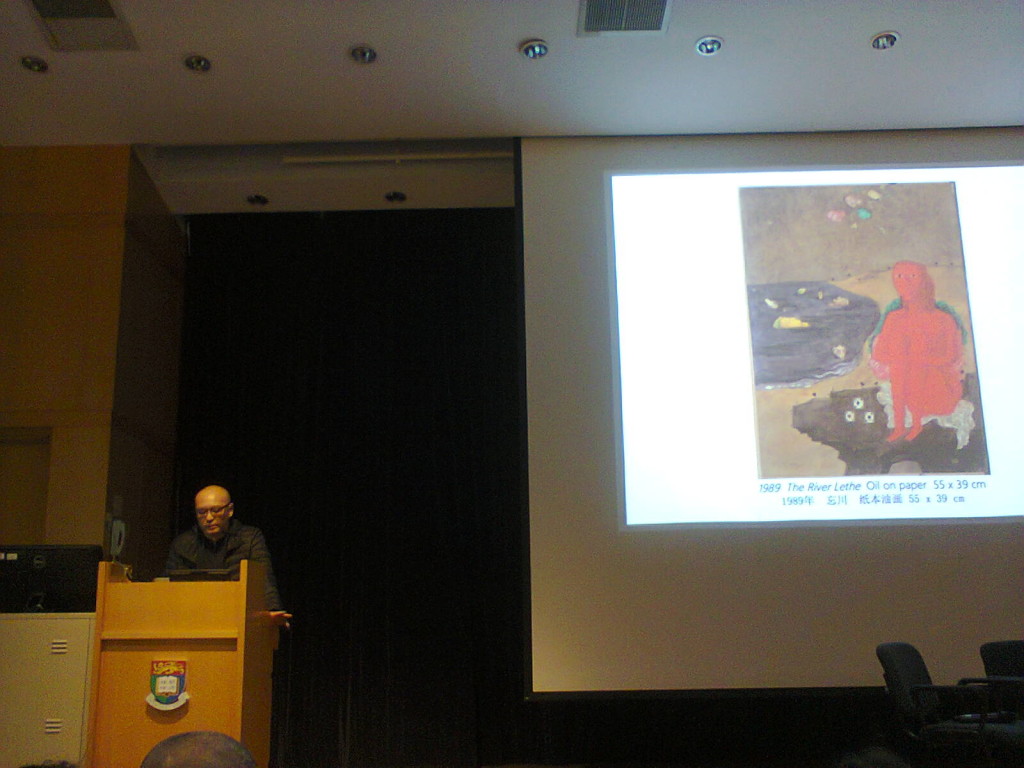Hong Kong, 18:30-20:30, February 23, 2016, M Plus Museum hosted by Hong Kong University
In conjunction with the Sigg Collection Exhibition Opening, the talk contextualized the work of three Chinese art stars – figurative painter Zhang Xiaogang張曉剛, video artist Zhang Peili張培力 and abstract/conceptual painter Ding Yi丁乙. All coming from the same generation (Ding Yi a bit younger), their careers began during what Gao Minglu called the 85 New Wave 八五新潮. They were all from a generation of artists that experienced the post- Cultural Revolution opening up of the People’s Republic of China, an explosion of creativity and freedom, they survived the 1989 suppression of this freedom, and managed to ride on the wave of Deng Xiaoping’s opening up policy and Western support extended to Chinese artists in the post-1989 era.
Each artist had a PowerPoint presentation prepared and gave a 20 minute overview of their last 30 years of work, followed by a short group discussion with the M Plus exhibition curator Pi Li皮力.
Zhang Peili started off a bit slow. He showed some figurative paintings he did back in the days and the glove paintings that lead him to conceptual art: Instead of completing the series of 100 glove paintings, he exhibited a text instead. Gloves also became a mail art project of Zhang’s where he sent out the gloves together with a description to a list of friends and acquaintances. From there on, in the late 80’s he started to work on his first video works, the first one being a three-hour tape of Zhang shattering and re-gluing a mirror. After the insightful introduction, Zhang realized time was running out and then rushed through two more decades of his work, skipping some while playing samples of other videos, usually just accompanied by the words “this is a good one, have a look.”
Zhang Xiaogang also had a 30 year chronology of his paintings prepared, from his graduation work in a Van-Gogh-meets-Millet-mashup style, over a self-introspection and soul searching during most of the 80s and the beginning of the nineties, up to the Bloodline series that made him famous during the 1990’s as well at the following experiments where he tried to step over his own shadow by making something new, that would be different yet still carry his signature (all the way to painted bronze sculptures resembling characters from the Bloodline series). One could observe the progression from the family motive of the Bloodline series, to the motive of his daughter (and cultural amnesia) in the following works, to an inclusion of daily environments and still lives (sometimes with and sometimes without persons). Zhang stressed the importance of self-introspection and finding who oneself really is, developing his oeuvre from his very immediate environment and the relationships within it, while taking into account broader social events and cultural influence onto this immediate environment.
Ding Yi followed up in the steps of Zhang and Zhang, and gave an overview of his career. I was a bit curious what he will have to say about the paintings which basically kept the same formal elements (crosses) during thirty years. He indeed had a lot to say, and he managed to unpack the very repetitive works into a system of relations and influences. There was one point when he realized that his work has a close connection to textile pattern design, and following that, he decided to utilize checkered textiles as a canvas. He also mentioned the changing cityscape of Shanghai as an influence on his works, as well as light and spatial design in one of the more recent works in white on black background. All of these remarks showed that even though the crosses stayed same, Ding was actually a person who observes his environment very carefully and draws upon it for inspiration. He also made an interesting remark regarding the fact why he chose to work in the medium of painting (as his conceptual-style work could be executed also in a different medium). He mentioned that the medium an artist chooses is very much related to his own personality and working style: He prefers to work alone and does not like to collaborate, and that is why he chose to keep painting the crosses instead of e.g. printing them.
All three artists presented very well developed storylines, educative, yet quite predictable official histories of their selves. It was notable that each of the artists stressed the personal and private aspect of art making (as opposed to social involvement or artist movements). This certain detachment from the outside world, the patience to work on one own and search for one’s self (and then a reflection of the world within this self) – instead of taking in and reproducing momentary impressions – was a common denominator for all of them. I also believe that this personality trait can be partially credited for their success. It allowed them to weather the 1989 storm, while drawing on the opportunities that preceded and followed.
In the first row of the auditorium, a smiling Dr. Uli Sigg was sitting, listening to the history that he made. I have not yet seen the exhibition with which this talk was associated, but even this talk provided quite some hints how the history of Chinese art was being made: Coming to China at the right time, buying up a large amount of art, conducting research and promoting the artists in one’s collection, and finally, donating this collection of now well researched and promoted important Chinese artists to a museum in the Chinese region, that is about to carry on the education of the public i.e. the process of codification of Chinese art history. With all the talk about multiple modernisms and cultural specificity, I could not get rid of a Chinese-art-made-in-Switzerland feeling. It also made me wonder whether Chinese art would today still consist of revolutionary Chairmain-Mao-in-Yan’An and happy construction worker tableaux only if it wasn’t for foreign collectors as Sigg.


